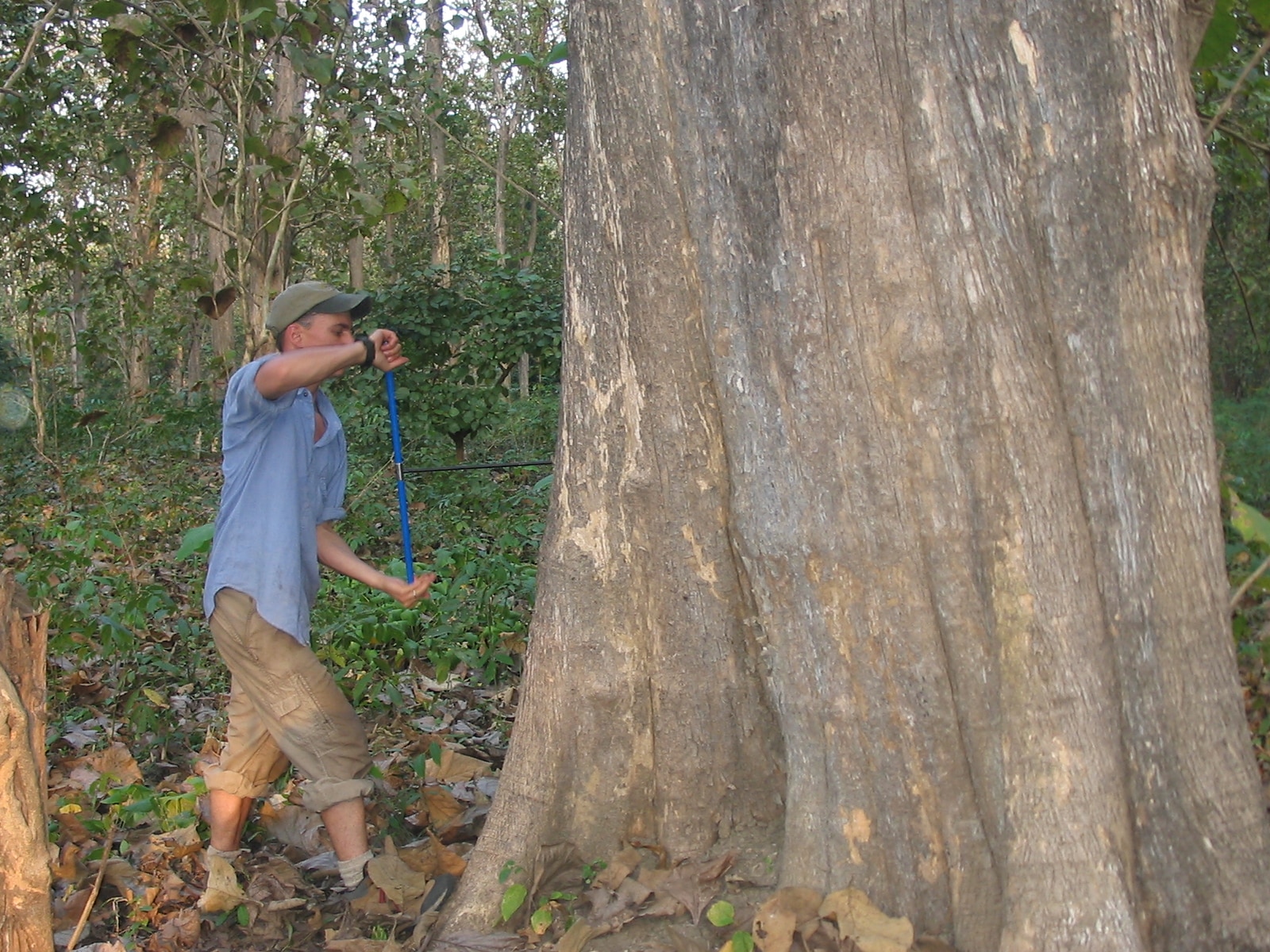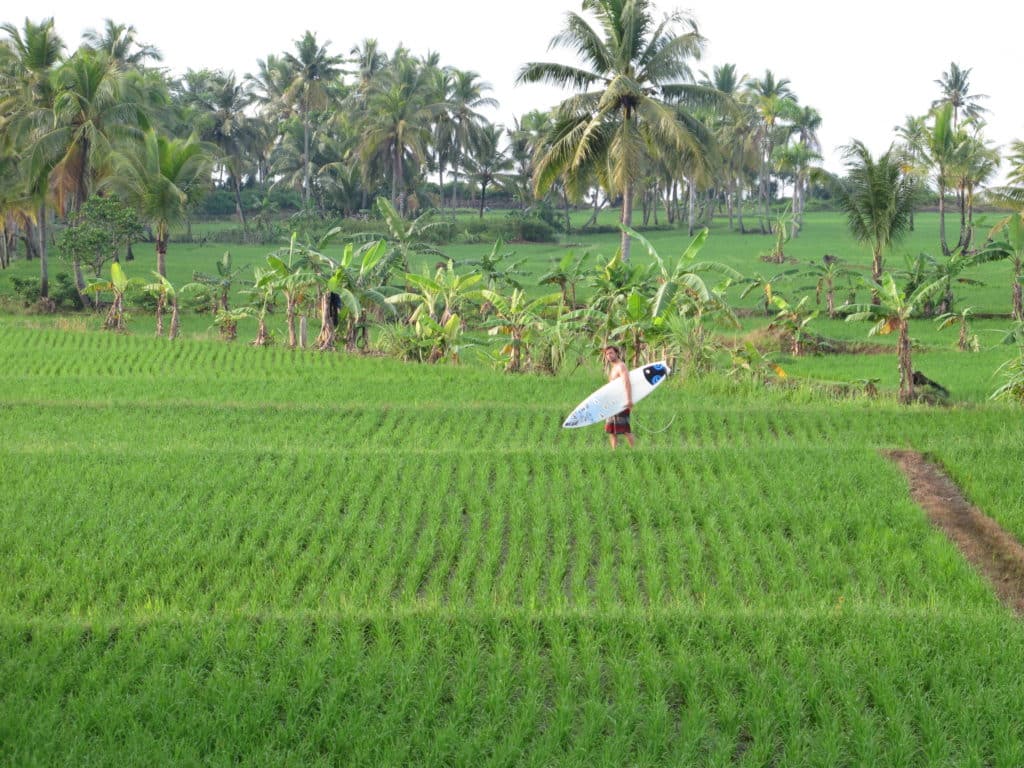
As you know, I’m intrigued by individuals who travel for a purpose. I have such a general interest in culture and places, that I usually only travel for travels sake. I’ve known John for 25 years now and I call him “the Traveling Academic” because of his research in forest ecology/geography during the past 10+ years has taking him to such varied places as Indonesia and Queens, New York. While I have been busy traveling during the past decade, he was earning a masters and PhD (and traveling!). Here’s my interview with Dr. John Sakulich (or click through to read other interviews with travelers.)
GN: What countries/places have you traveled to for academic research or conferences?
JS: Fieldwork for research has taken me to quite a few places. I’ve worked in forests in some remote places like the Sierra-Nevada and Cascades of northern California, the southwestern US (mostly New Mexico and west Texas), forests throughout the Appalachian mountains, and some of the outer islands of Indonesia. I’ve also done fieldwork in very densely populated places like Java, Indonesia and Queens, New York.
Academic conferences are almost always held in large cities. I’ve attended conferences in many big cities including Philadelphia, Chicago, Boston, Washington, D.C., Phoenix, Seattle, and Beijing.
GN: Can you sum up your research/academic interests for us?
JS: Basically, I’m fascinated by forests and how they work as ecological systems. Forests are really dynamic places—they undergo a lot of changes in their structure and species compositions. My research involves reconstructing past forest dynamics to understand how changes in climate, human land use, and disturbances like fire and insect outbreaks affect forest structure and the distribution of tree species.
I use dendrochronology—the science of analyzing tree-rings—as a tool to reconstruct past forest structure. Trees are fantastic sources of information about the past because they stay in one place, generally live for a long time, and faithfully record environmental factors that affect their growth. For example, if a tree’s growth is limited by water availability and there is a severe drought in a given year, that tree won’t grow very much and will produce a very narrow ring for that year. Similarly, a tree that loses a few major branches in an avalanche will have to recover from that injury and will experience a period of slower growth for a number of years. If you have enough tree-ring samples from a study site, you can work out an entire environmental history of the forest.
My most recent work investigates areas where forests are expanding into other ecological zones such as the upslope migration of trees into alpine tundra. The elevation of treeline has generally been moving upslope in many mountainous parts of the world in response to recent warming temperatures. Many questions remain to be answered about the ecological consequences of treeline shifts.

GN: I find that traveling for a particular reason, in your case for research, puts you in different situations and meeting different people than you normally would? Any examples of particularly interesting cultural situations you’ve been put in due to your research?
JS: When I travel for research, most of the people I interact with are fellow scientists or government officials responsible for protecting natural areas such as national park staff. For example, in Indonesia I spent a lot of time working with researchers from an Indonesian university who were collaborators on the project I was working on. It was great working with them because despite the cultural differences of our home countries, we shared the culture of science. Research at Indonesian universities is done in very much the same way as research at American or European universities. We all write proposals for funding, we all have labs full of students doing the day-to-day research, and we all present our findings at conferences and in scientific journals. It’s easy to make new friends in new places if you share the same passion for learning about the natural world.
GN: Can you talk more about Indonesia? How long were you there? What islands were you on? What were you doing? How did the locals react to your presence?
JS: I made three trips to Indonesia totaling a few months. I was generally based in the city of Bandung in west Java, and I did quite a bit of fieldwork throughout Java. I also spent some time in north Sumatra, Sulawesi, Sumbawa, Lombok and Bali. I was collecting tree-ring samples from a few species of trees that produce reliable annual rings. Tree-ring analysis is often difficult or impossible in the tropics because the climate permits many species to grow all year. The lack of a dormant season means that annual rings aren’t formed. However, some species, like teak, drop their leaves in the dry season and grow new leaves in the rainy season. This is an adaptation to prevent moisture loss, and it results in reliable annual ring formation in teak wood. My job was to travel around to the few remaining pockets of old-growth teak trees and collect core samples from their stems. Removing cores doesn’t harm the trees and it allows us to count and measure the rings back in the lab.
Folks in big cities on Java are used to foreign visitors so my presence wasn’t unusual. However, Indonesians are generally very friendly people and love the opportunity to welcome foreigners. I was often bombarded with questions about where I’m from, what my home country is like, and how many people are in my family! When meeting new people in Indonesia I would usually ask them to guess where I’m from. No one ever guessed the United States. The most frequent guesses were Australia, the Netherlands, Germany, or France. Folks I met would usually get super excited to learn that I was American and then proceed to share all their knowledge of America with me. Most Indonesians seemed to really like America because of all the Hollywood films they’ve seen. One Indonesian boy I met was very disappointed that I didn’t personally know Arnold Schwarzenegger.

GN: Did your academic interests lead you to your international travels or was it your interest in travel/other cultures that lead you to do your research internationally?
JS: I don’t think it was really a cause and effect relationship one way or the other. I’ve always been interested in travel and seeing new places. My academic interests really developed in college when I started learning more about ecology. I suppose I’ve just been really lucky to combine both interests on a professional level.
GN: Any funny stories from your travels?
JS: Well, as I said, in the big towns of Indonesia western visitors aren’t uncommon, but in small villages on the outer islands a foreigner is quite a novelty. On the small island of Muna, off the southeast coast of Sulawesi, I was staying in a guest house where the Mandi (a sort of bucket and ladle for showering) is enclosed behind a shoulder-high cinderblock wall in the front yard. When I would go out to wash each morning, the whole neighborhood would gather to watch!
GN: I know you’ve done a bit of backcountry research in the high desert in remote locations of Texas? Did you come to any academic/physical/spiritual/emotional realizations out there?
JS: I spent a lot of time doing fieldwork in Guadalupe Mountains National Park. It’s a wonderful, remote place. It’s one of the least visited National Parks in the US, and over 95% of the park is designated as wilderness. My field assistants and I spent several two-week stints in the backcountry collecting tree-ring samples to reconstruct the history of wildfire in the mixed conifer forests of the park’s high country. We worked out a record of fires going back to the late 1500s. The major conclusion from our work was that 20th century grazing and fire suppression have allowed the establishment of very dense tree cover that increases the likelihood of catastrophic, stand-destroying fire. Unfortunately, this is similar to many forests throughout the western US.
GN: Is there a lot funding available for the type of research you do? Where do you look for grants?
JS: The National Science Foundation (NSF) provides funds for a lot of research in my field. They mostly fund big projects that require a lot of money to pay for equipment, travel, and personnel (faculty and graduate student researchers). Getting funding from NSF is very competitive. You have to show that your project will make significant contributions to advancing scientific knowledge, that the results of your research will have a positive impact on society, and that you are capable of successfully carrying out your project.
Other government agencies also fund ecological and environmental research. The US Forest Service and National Park Service are the agencies most likely to fund research in my field.
Many private conservation organizations like The Nature Conservancy and national parks “friends” groups also provide small grants for research.

GN: What is your dream destination to do research/collect data, etc.?
JS: I would love to explore the forests of the Hindu Kush Mountains. When I was in graduate school, a classmate of mine had served in the military in Afghanistan. He told stories of the woodlands in the eastern part of the country near Kabul. He and I speculated that these forests probably contain ancient trees and are relatively unexplored by western researchers. I think this is a fascinating part of the world that features some of the most dramatic landscapes on earth. Unfortunately, the political instability of Afghanistan and Kashmir make it very difficult to visit, let alone to conduct research there.
GN: Any international research trips planned for the future?
Right now my main objective is getting undergraduate students into the field collecting data and being involved in the research process. To maximize the opportunities for students I’m mostly planning fieldwork close to home in Colorado and the Southwest. However, sometime in the next few years I’d really like to take students to northeast Turkey to do some research on high elevation forests of the Pontus and Taurus mountain ranges.
GN: Thanks for taking the time to talk with us, John!


4.5